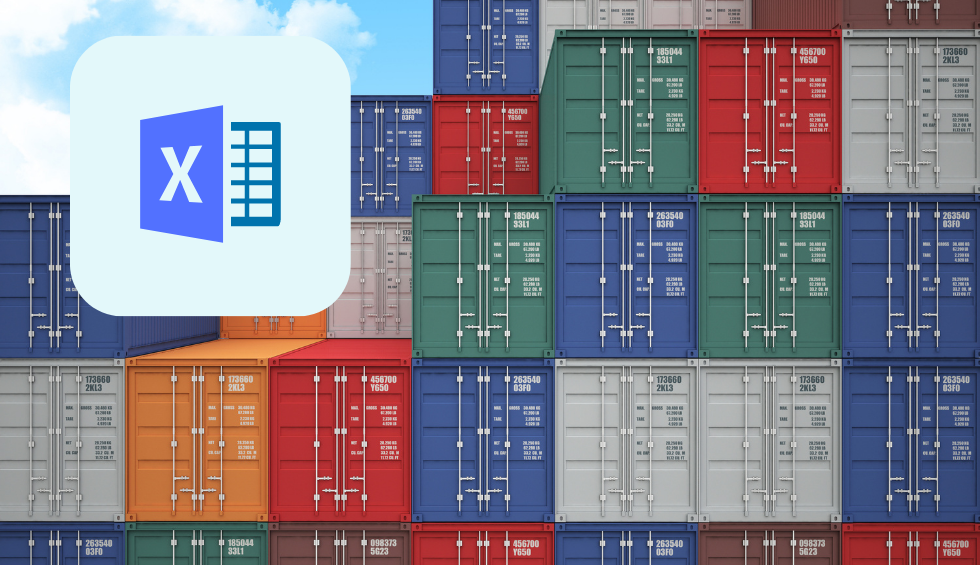If you work in capital project management, you’re most likely a pro at using Excel. Excels are one of the most traditional tools that project managers use, after all it’s a universal tool with a lot of useful features and functionalities. Project scheduling and costs forecasting can be easy to manage using Excel graphs and macro projects and different data input checks are extremely efficient for maintaining data integrity. Despite all these useful features, there are some areas of capital project business, where Excels don’t work efficiently. After reading this article, you’ll know why you shouldn’t use Excel in capital project materials management.
Materials tracking in capital projects
Materials deliveries, their contents and logistics plans are typically shared with the project network via Excels. Those Excels might be sent via email between individual employees or they might be shared to a project platform (such as a shared Google Drive folder). Sharing information via Excels is efficient within teams of a couple of dozen members, however, when we start looking at global projects, with hundreds of suppliers, millions of materials and thousands of containers, Excels are a truly inefficient way of sharing information. We’re all painfully aware of the challenges that Excels have presented at construction sites of investment projects even worth billions of USD. In fact, on average large capital projects are completed two years behind schedule. Below we’ve listed the reasons, why your heavy industry organization should move away from using Excel in capital project materials management.
The 7 cons of using Excel in capital project materials management
1) Lack of confidentiality combined with limited sharing possibilities
On one hand, it’s possible to provide limited access to documents to some project parties, but maintaining this amount of security can be time-consuming. For example, if you want to grant access to suppliers only to folders relating to their purchase orders, you might have to exclude them from all other documents in the folder or you have to grant access to individual documents.
On the other hand, if you want to grant access to a document for engineering, procurement, the supplying company, logistics service providers and contractors, you’re stuck with limited possibilities for sharing the documents to all relevant project parties easily.
2) Crucial information is not visible to all relevant network parties
If that doesn’t raise alarms in a project managers mind, I don’t know what will. When sharing information via Excels, you’re projecting your project to high risks, because information is held by a limited amount of people. For example, if your supplier sends information on packages and containers to their direct contact person at your organization, details on those packages will be held by only a couple of people. If that contract owner or employee in the suppliers organization falls ill or goes on holiday, the information in the worst case scenario will be unattainable. Even at your supplier’s side, only one employee who has actually made the Excels would be able to help you with questions you have. This means that material flows aren’t transparent and visible to all relevant members of the project party.
3) To put it in honest terms- locating materials using Excels is a waste of your resource’s time
Your contractor might come to you and say that they need position 920 LHV 231 to continue assembly- how can you locate that single position from a folder with hundreds of different Excels from different suppliers? You have to find the supplier and purchase order number for the given position and then look through the different Excel packing lists, that may contain that position. Sure, there are work arounds for this, for example you can combine multiple worksheets into one Excel and then use CMD + F, but that creates a lot of work to track down basic information. Even once you’ve located the needed equipment from all the Excels, there’s no guarantee that the Excel will have been updated with the latest information on the delivery timeline and site ETA.
4) The human factor
There is room for human error with a lot of manual typing and filling of Excels- for example using a comma instead of a dot in a certain cell can spoil the whole formula.
5) Inability for multiple people to work on a spreadsheet at the same time
Excels can be overridden, data can be lost and conflicting copies can be created, if two people work on a spreadsheet at the same time. Considering the vast amount of data stored in Excels and the amount of time employees have to spend filling in the Excels, it’s very likely that more than one person will need access to an Excel at a given time. There are workarounds for issue such as using Google Sheets or sharing the Excel books via enterprise server holders, but these options aren’t as flexible and easy-to-use as they should be.
6) Lack of information continuity
With Excels, you will typically lack a link between purchase orders-packages-containers and delivery information. For example, even if your supplier fills in the Excels correctly with all needed details, they will still book delivery from the forwarder via email. When you’re looking at an Excel with packages and containers, you won’t have any idea whether delivery has been booked, if the goods are in transit or if they’ve arrived at your construction site.
7) Limited customer support
When your supplier is struggling to gain access to a shared Google Drive folder or download Google Drive for desktop, who should they reach out to for help? There is a vast amount of useful self-help articles and YouTube videos, but in general the cross-enterprise customer support options are limited. You don’t want your project team to spend their working hours on guiding suppliers and contractors on how to manage Google Drive access rights.
The efficient way to manage materials in capital projects
While using Excels in capital projects materials management is truly inefficient, the good news is that there are multiple more efficient methods for tracking materials in capital projects – you can find some of them listed in this blog post. It’s very important to have a material logistics plan (MLP) in place for your project, which will help you save on materials costs and ensure timely delivery of goods. Some things you should consider in the MLP is how materials information will be shared within the project network, identify how materials will be tracked (with key performance indicators) and how communication and training will be handled.
Did you enjoy this article? You might also enjoy our blog posts on
- Material efficiency in capital projects
- 9 root causes of productivity issues in capital projects
- Project business in Europe – trends of Q2 2022


